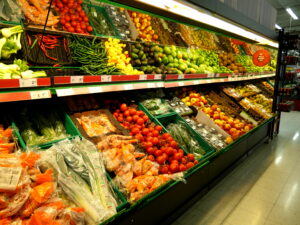Soil-Based Carbon Sequestration: An Opportunity for Europe to Lead this Decade
Soaking up carbon dioxide in agricultural soils is a significant decarbonization opportunity for Europe. Europe’s land mass has the second highest potential in the world for carbon sequestration by volume. We estimate by 2030 around 10% of the EU’s annual CO2 emissions in Europe can be removed from the atmosphere into croplands.
Why now?
The EU’s upcoming “Fit for 55 package”, to be enacted later this year, is a major revamp of the EU’s climate and energy legislation. The revisions of key policies will translate the European Green Deal’s vision into legal obligation and drive the implementation of the raised 2030 target of 55% net emissions reduction compared to 1990 levels. It is a unique opportunity to set the course for climate neutrality and deliver increased competitiveness.
With the support of Breakthrough Energy, we have published our look at the current state of innovation in European soil-based carbon sequestration: How Can the EU Lead in Soil Carbon? We spoke to leading innovators across Europe and asked them; what barriers are preventing continental-scale adoption of soil-based carbon sequestration by 2030?
Major Barriers
The response was cautious optimism. While the scale of the opportunity was widely acknowledged, and the appetite from investors is clear, there are significant hurdles to clear including:
- Developing soil measurement tools and infrastructure
- Ground-truthing satellite data with physical measurements to reduce the cost of data soil carbon content data acquisition
- Establishing a robust Monitoring, Reporting, and Verification (MRV) framework
- Developing carbon accounting methods solving for additionality and permanence concerns.
What does the innovation landscape look like?
We have covered this in some detail before with a global lens (Investment, Technology, and Markets). In Europe, there are few private carbon marketplace compared to North America where Nori, Indigo, Truterra, and others are making markets between farmers and corporate carbon removal credit buyers. In the EU, Soil Capital launched the EU’s first certified, multi-national carbon payment program in September 2020. However, many key innovations in soil measurement and monitoring are based in Europe. There is Netherlands-based handheld soil sensors from Agrocares, whole farm carbon modeling software from the Cool Farm Alliance and soil modeling from Greenback and Smart Cloud Farming. These critical pieces of infrastructure require further support through grant funding and pilot siting to support the growth of this industry in Europe.
What can the EU do?
EU-funded projects promoting soil health and carbon sequestration are in place, but a lack of adequate monitoring, reporting and verification (MRV) infrastructure is slowing large-scale adoption of new agricultural practices. Innovation is needed across the value chain to lead in this sector. In particular, automated testing and monitoring to reduce costs, and standardization of monitoring frameworks are key.
Our main policy recommendations are:
- Increase the targets for GHG emissions and removals of land use, land use change and forestry (LULUCF),
- Create an EU-wide standard for monitoring, reporting and verification (MRV),
- Create a mechanism to compensate farmers who implement sustainable farming practices to sequester more carbon.
Is it all about Carbon?
There are many policy reforms and strategies contributing to the EU’s new agricultural economy. Providing a framework for soil carbon sequestration is just one pillar of upcoming policy reform as part of the European Green Deal implementation.
- The Farm to Fork and Biodiversity Strategies set goals to restore soil health and stop soil degradation.
- Proposed reforms to Common Agricultural Policy subsidies may see payments more strongly linked to environmental performance, replacing subsidies with incentives.
- Land Use, Land Use Change & Forestry (LULUCF) is on track open up more opportunities for CO2 removal.
This reflects the wider movement towards ecosystem service payments and nature-based solutions. Farmers are increasingly being rewarded for the ‘public goods’ they provide from water quality, biodiversity, nutrient cycling, pollution removal, and carbon sequestration. We have looked at the growth of the ecosystem service payment industry in agriculture in more detail here.
What Next?
As part of our Cleantech For Europe initiative with Breakthrough Energy we will continue to convene policy makers and innovators on an on-going basis to monitor the progress of our recommendations and accelerate the adoption of regenerative agricultural practices which actively solve climate challenges.
At Cleantech Group, soil monitoring technologies are on our research agenda this year to better understand where the challenges and opportunities lie. As mentioned above, improving understanding of our soil, and our ability to remotely measure changes in soil, will have far reaching implications beyond being able to price a change in its carbon content.


